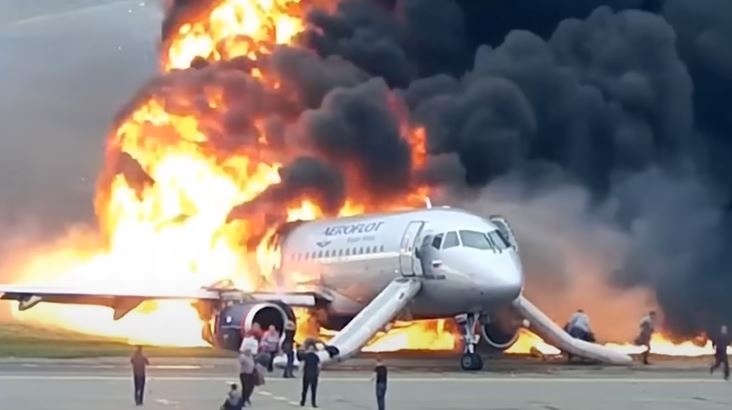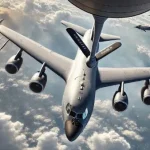Aircraft engines are marvels of engineering, designed to operate at extreme speeds and temperatures. However, like any machine, they aren’t immune to problems. One rare but serious issue is engine fire. If you’re curious about why plane engines catch fire and how they are prevented, this article covers the causes and precautions that keep air travel safe.
Common Causes of Plane Engine Fires
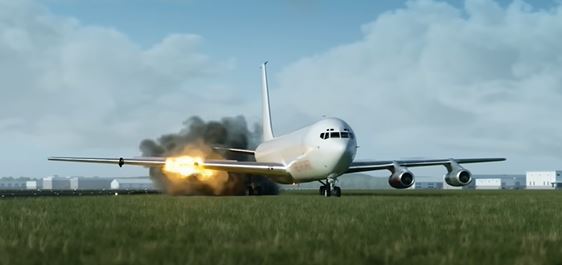
- Fuel Leaks Fuel is the lifeblood of any engine, but if it leaks in the wrong place, it can ignite. Damaged fuel lines, loose connections, or malfunctioning seals can allow fuel to escape and come into contact with the engine’s hot surfaces, sparking a fire.
- Bird Strikes One of the more unexpected causes of engine fires is bird strikes. When birds are sucked into an engine, they can cause significant damage to moving parts like turbine blades. This damage can disrupt airflow and cause overheating, which in some cases leads to fire.
- Engine Overheating Engines naturally generate a lot of heat, but when cooling systems fail, the engine can overheat. When this happens, the heat can ignite nearby fuel or oil, causing a fire. Overheating can result from various factors, such as overuse, lack of lubrication, or external damage.
- Oil Leaks Just like fuel, oil is vital for engine function but can cause fires if it leaks. Oil serves to lubricate engine parts, but if it drips onto hot sections of the engine, it can catch fire. Small leaks are often detected early, but large or sudden leaks pose a serious risk.
- Electrical Failures Modern aircraft rely heavily on electrical systems to operate. Faulty wiring or electrical malfunctions can generate sparks, which may ignite fuel or oil in or around the engine. Electrical fires are typically less common but can still be dangerous if not addressed quickly.
- Foreign Object Damage (FOD) Small debris like nuts, bolts, or even runway litter can get sucked into the engine and damage vital components. This damage can lead to overheating, fuel leakage, or mechanical failure, all of which increase the risk of a fire.
How Aircraft Are Designed to Prevent Fires?
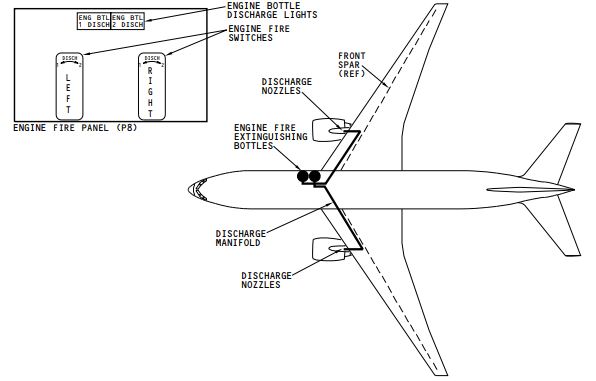
While engine fires are dangerous, modern aircraft are designed with numerous safety features to prevent and manage them. Here are a few key ways planes are protected:
- Fire Detection Systems: Aircraft engines are equipped with sensors that can detect high temperatures or smoke. These sensors are placed in the engine fire zones. These systems alert pilots to any potential fires so they can take immediate action. Generally, before fire overheat is detected by the system so that pilot can take action before fire occurrence.
- Fire Suppression Systems: Many planes have built-in fire suppression systems that release fire-retardant chemicals into the engine to extinguish fires before they can spread. Multiple fire extinguishers are placed in proper location to extinguish the fire.
- Engine Design and Materials: Advanced engineering ensures that modern engines are built to withstand extreme conditions, including high heat. Materials used in engine construction are highly heat-resistant, reducing the likelihood of ignition.
- Routine Maintenance: Frequent and thorough maintenance checks help catch potential issues like fuel leaks, oil leaks, or worn-out parts before they can lead to engine fires.
Why Do Planes Catch Fire When They Crash?
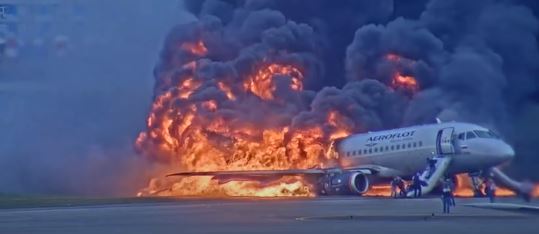
When planes crash, fires often occur due to the combination of fuel, impact forces, and heat. A crash can cause significant damage to the aircraft’s fuel tanks and electrical systems, creating an environment where fire is highly likely. Here’s a breakdown of why planes often catch fire during a crash:
1. Fuel Ignition
- Aviation Fuel: Airplanes carry large quantities of highly flammable jet fuel (typically Jet-A or Avgas), which powers the engines. During a crash, the fuel tanks may rupture or fuel lines may break, releasing fuel into the environment.
2. Mechanical Damage
- Engine and Electrical Failures: Upon impact, engines and electrical systems are often severely damaged. The heat generated by the engines, combined with damaged electrical wiring, can cause short circuits or fuel leaks to ignite.
- Hot Engine Components: The engines and turbines, which operate at extremely high temperatures during flight, may still be hot at the time of the crash. If leaking fuel comes into contact with these hot parts, it can cause an instant fire.
3. Friction and Heat
- Friction from Sliding: In some crashes, the plane skids across the ground, generating friction between the aircraft and the surface. This can produce enough heat to ignite fuel or cause the tires to catch fire.
- Metal Contact with Ground: When the aircraft hits the ground or other surfaces, the force of metal scraping against concrete, asphalt, or other hard materials can create sparks, further increasing the chances of fire.
4. Explosions
- Fuel Vapor Explosion: When fuel leaks in a confined space, it can vaporize and mix with air. This vapor is highly combustible. Even a small spark or heat source can cause the vapor to ignite, leading to an explosion.
- Hydraulic Fluids: Planes also use other flammable fluids, like hydraulic oil. If these fluids are released during a crash, they can catch fire, adding to the overall danger.
Why Not Every Crash Results in Fire
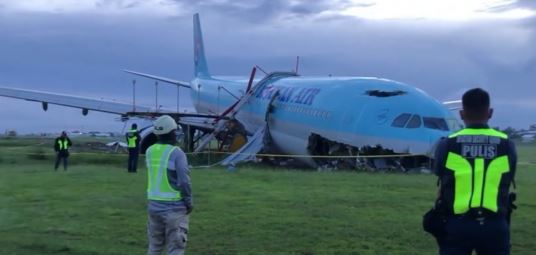
While many plane crashes result in fire, not all do. Factors like the amount of fuel on board, the nature of the impact (whether it’s a controlled emergency landing or a high-speed crash), and the condition of the engines all play a role.
For instance, a controlled landing on water or a grassy field might not generate the same amount of friction or heat as a crash on a hard runway, reducing the chances of a fire.
What Happens If a Plane Catches Fire?
When a plane catches fire, either in the engine or elsewhere, it triggers a series of emergency procedures designed to ensure the safety of passengers and crew. Here’s what typically happens when a fire occurs on an aircraft:
1. Immediate Detection
- Engine Fire Detection Systems: Modern airplanes are equipped with sophisticated fire detection systems. Sensors located in critical areas, such as the engines or cargo hold, detect heat or smoke and alert the pilots through cockpit warnings.
2. Pilot Response
- Fire Suppression Systems: Once an engine fire is detected, the pilots will usually activate onboard fire suppression systems. These systems release fire-extinguishing agents, such as halon, to smother the fire.
- Engine Shutdown: In the case of an engine fire, the pilot will shut down the affected engine immediately to prevent further damage. Planes are designed to fly safely on one engine, allowing pilots time to land safely.
- Mayday Call: Depending on the severity of the fire, the pilot may issue a mayday call to air traffic control, signaling an emergency and requesting immediate priority to land at the nearest airport.
3. Emergency Landing
- Once the fire is under control, or if it’s too dangerous to stay airborne, the pilots will prepare for an emergency landing. Aircraft are often directed to the nearest suitable airport, where emergency services will be ready.
- Single-Engine Flight: In cases of engine fire, modern aircraft can fly safely on one engine for an extended period, giving the crew time to find a suitable landing spot.
4. Crew and Passenger Instructions
- Cabin Fire Procedures: If the fire is in the cabin (e.g., an electrical or galley fire), flight attendants will use handheld fire extinguishers to manage the situation. Passengers may be instructed to remain seated, put on oxygen masks, or prepare for an emergency landing.
- Evacuation Preparedness: In severe cases where the fire spreads, the crew will prepare passengers for an emergency evacuation upon landing. They will give instructions on how to safely exit the aircraft.
5. Emergency Services on Standby
- Fire and Rescue Teams: Airports have emergency response teams, including firefighters and medical personnel, on standby for such situations. These teams are ready to respond quickly once the plane lands, extinguish the fire if necessary, and assist passengers and crew with evacuation.
6. Evacuation (if necessary)
- If the fire is still active upon landing, or if there is a risk of explosion, the crew will initiate an evacuation. Passengers are directed to use emergency slides or exits to leave the aircraft quickly. In such scenarios, leaving belongings behind is critical for safety.
7. Post-Landing Inspection
- After the plane is safely on the ground and passengers have evacuated, investigators will inspect the aircraft to determine the cause of the fire. This helps prevent future incidents and identifies any technical or maintenance issues that need to be addressed.
Key Takeaways:
- Fire Containment: Modern planes have multiple systems designed to detect, suppress, and contain fires before they pose a serious threat.
- Pilots’ Training: Pilots are extensively trained to handle emergencies like fires, and aircraft can fly on a single engine if needed.
- Passenger Safety: In most cases, fires are detected early and handled without needing to evacuate, but in severe cases, emergency landings and evacuations may be required.
While a plane catching fire can sound alarming, aviation safety systems and protocols are incredibly effective, and the chances of a successful outcome are high.
Aircraft fire statistics
Aircraft fires are rare but serious. Following are the aircraft fire statistics in different segment:
In-Flight Fires
- Extremely Rare: Occur in a tiny fraction of flights (1 in 5.7 million). According to FAA between 1981 to 1990, 20% of all fatalities caused by in flight fires in the US
Post-Crash Fires
- Common in Fatal Crashes: In survivable crashes, up to 40% of fatalities result from fire.
- Decreasing Incidents: Fire-related accidents have dropped by over 60% since the 1980s.
Ground Fires
- More Frequent: Dozens of ground fires occur annually, mainly during fueling or maintenance.
Cabin Fires (Lithium-Ion Batteries)
- Rising Concern: According to FAA Lithium –Ion Battery incident statistics, total 558 verified incidents were reported between 2006 and October 2024.
Airport Fire Response
- Fast Response: Average airport fire response time is 3 minutes, reducing risks significantly.
Overall, fire-related incidents are declining thanks to better fire suppression systems, flame-resistant materials, and improved emergency procedures.
Conclusion
While engine fires are rare, understanding their causes helps shed light on the complex systems keeping airplanes safe. From bird strikes to oil leaks, a range of factors can lead to an engine fire, but with proper design, maintenance, and fire suppression technologies, aircraft are built to handle such emergencies.
Whether you’re a frequent flyer or just curious about aviation safety, knowing why and how engines catch fire provides insight into how air travel remains one of the safest modes of transportation.
